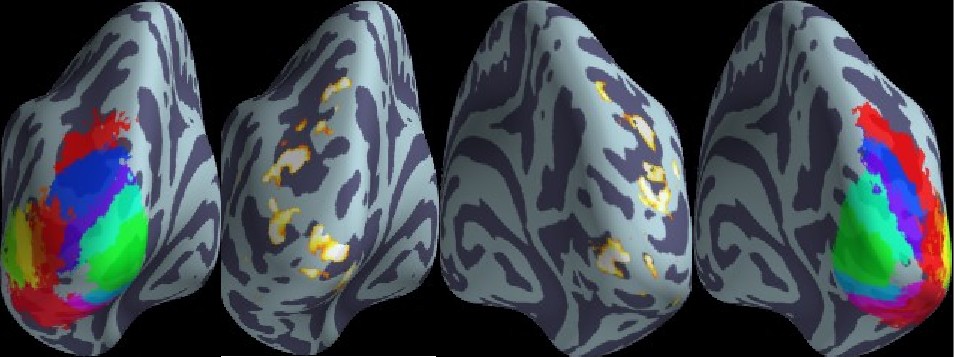Section: New Results
Second order scattering descriptors predict fMRI activity due to visual textures
Participants : Michael Eickenberg, Bertrand Thirion [Correspondant] , Alexandre Gramfort.
Second layer scattering descriptors are known to provide good classification performance on natural quasi-stationary processes such as visual textures due to their sensitivity to higher order moments and continuity with respect to small deformations. In a functional Magnetic Resonance Imaging (fMRI) experiment we present visual textures to subjects and evaluate the predictive power of these descriptors with respect to the predictive power of simple contour energy - the first scattering layer. We are able to conclude not only that invariant second layer scattering coefficients better encode voxel activity, but also that well predicted voxels need not necessarily lie in known retinotopic regions (see Fig. 9 ).
|
More details can be found in [56] .



